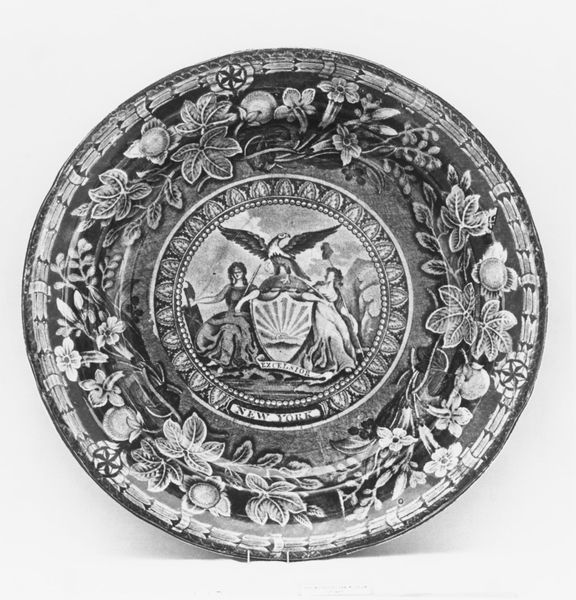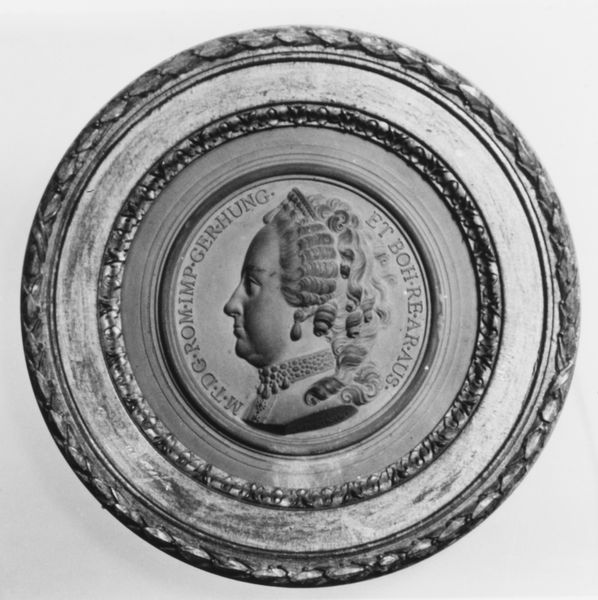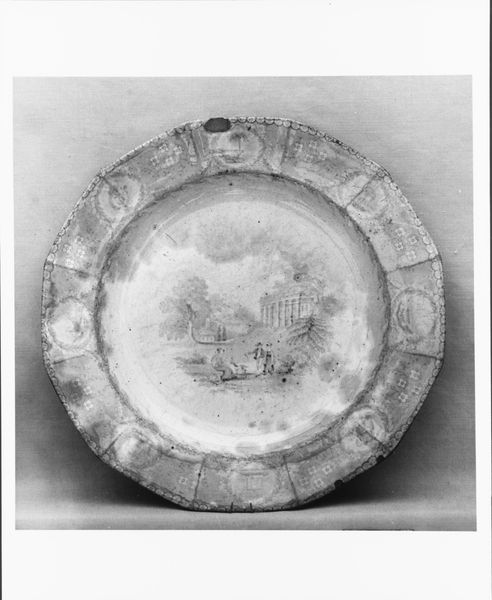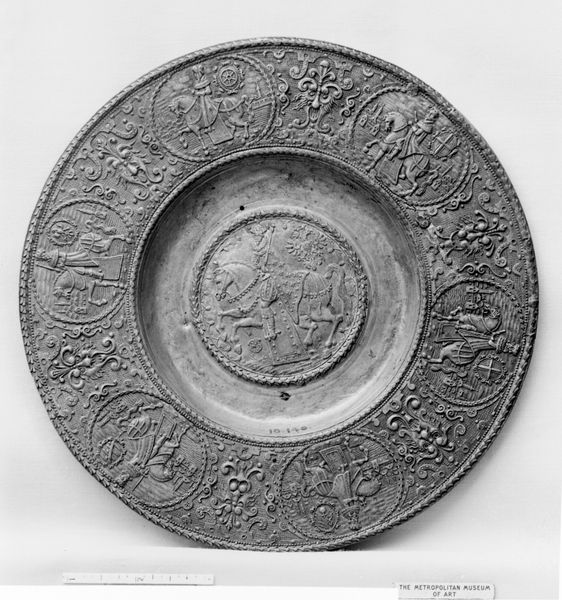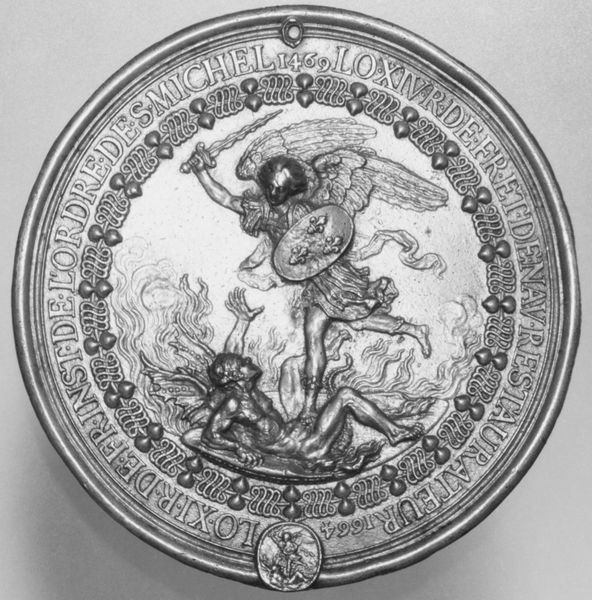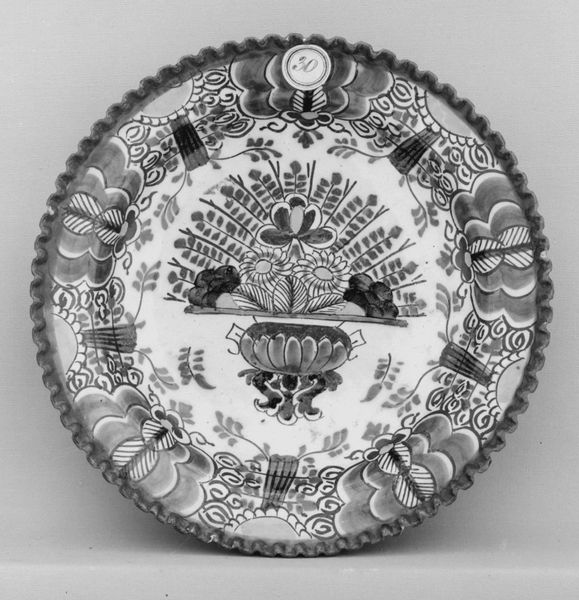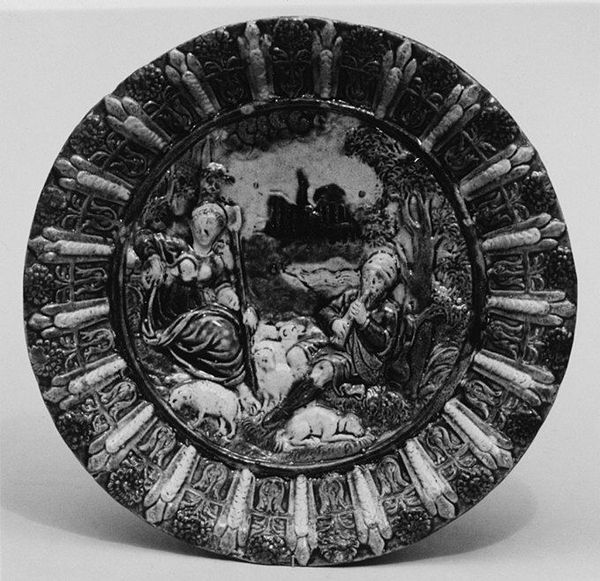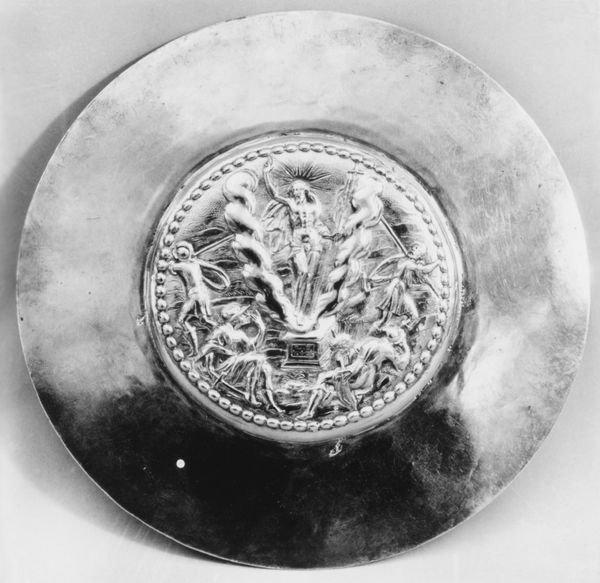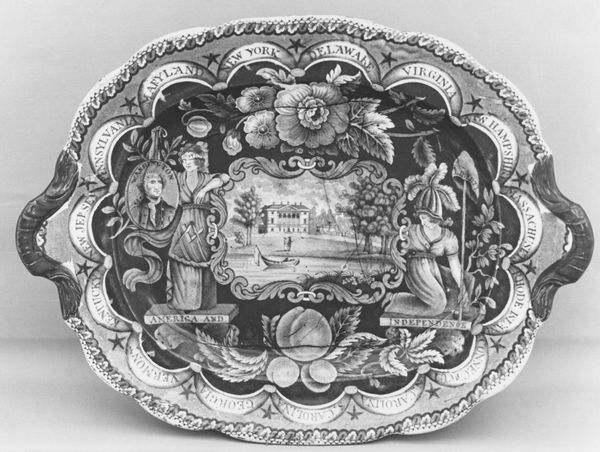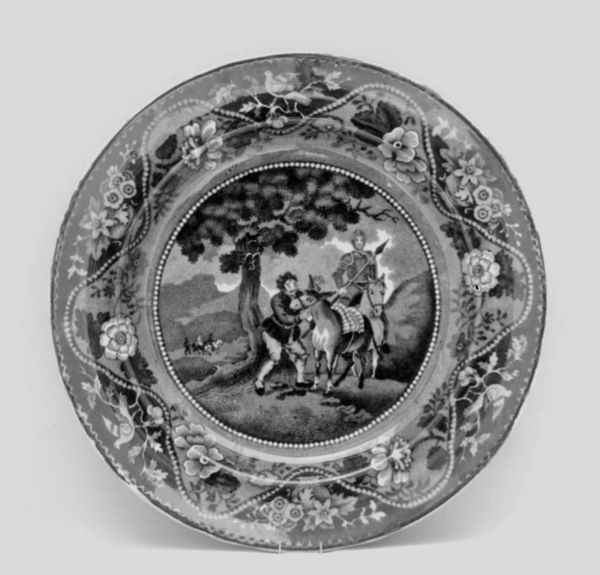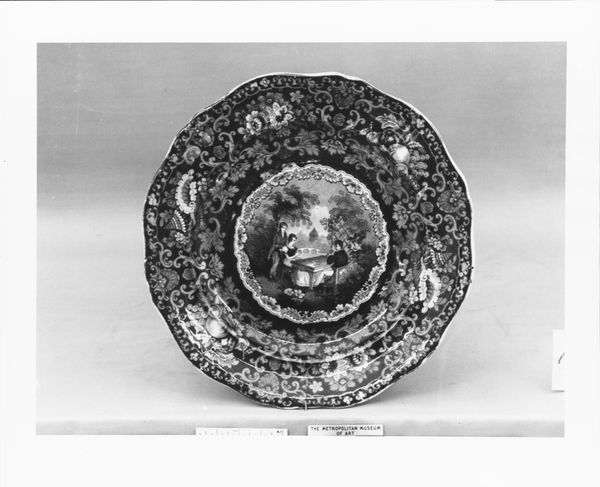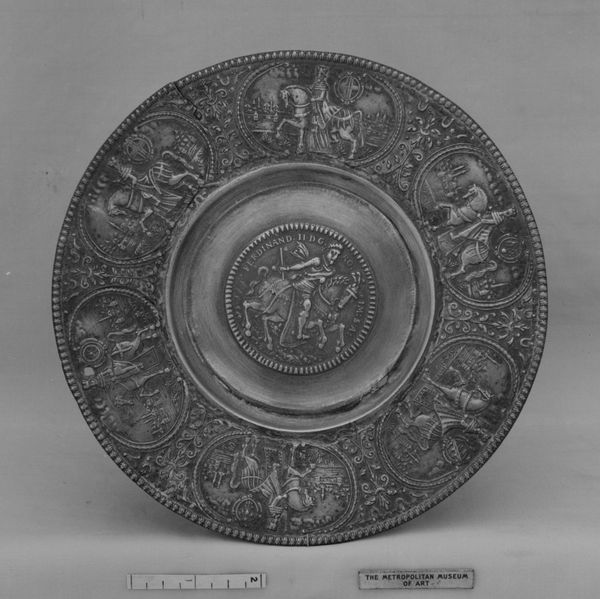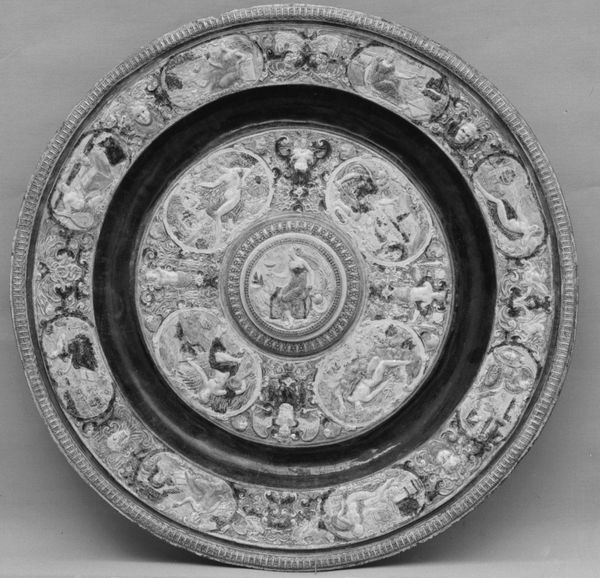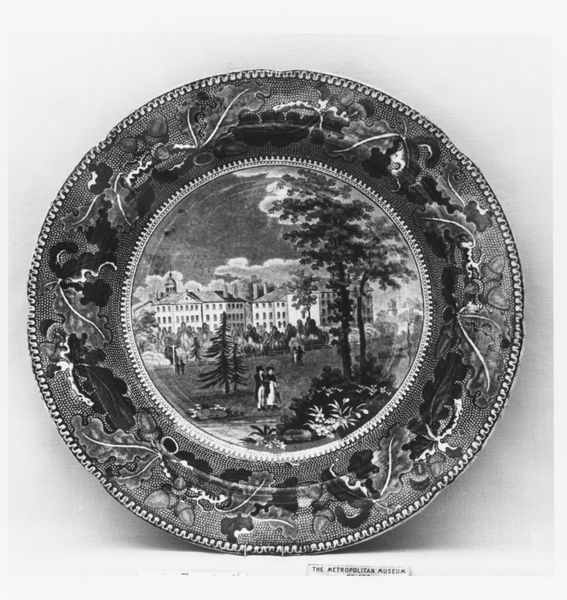
print, ceramic
#
16_19th-century
#
decorative element
# print
#
ceramic
#
ring
#
stoneware
#
geometric
#
decorative-art
Dimensions: Diam. 8 1/2 in. (21.6 cm)
Copyright: Public Domain
This plate was made in Staffordshire, England, around the 1830s, by Thomas Mayer. It’s earthenware, meaning it was formed from a relatively porous clay, and then glazed to make it impermeable. What’s most striking about this object is its decoration: an anchor and other emblems of Rhode Island. The design has been printed on the plate, a transfer technique perfected in Staffordshire. This allowed for precise, repeatable imagery, which was critical to the rise of ceramics as a mass-produced industry. Notice the amount of detail achieved through this method. Given the low cost of earthenware, and the efficiencies of transfer printing, these plates were relatively inexpensive. They allowed ordinary people to participate in civic culture, by literally consuming images of their state identity. This object is a reminder that even the most everyday things can be powerful symbols of belonging.
Comments
No comments
Be the first to comment and join the conversation on the ultimate creative platform.
